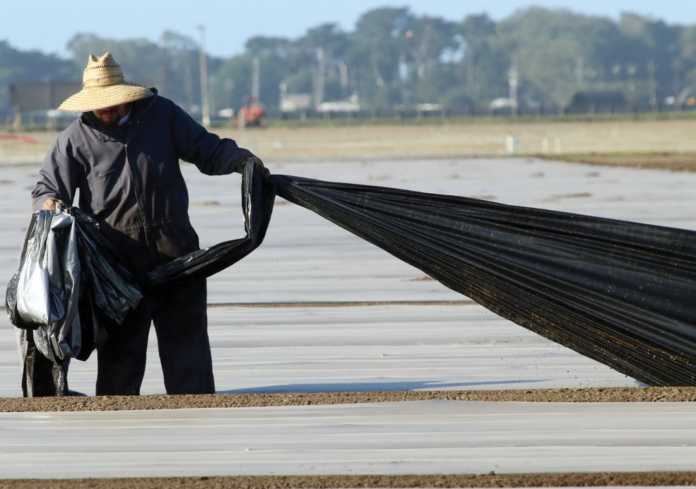
Editor’s note: To view the study visit https://bit.ly/2oGogtL …This is the third entry in a multi-part series concerning housing in the Pajaro Valley. For the first part see the Sept. 20 edition of The Pajaronian or click HERE.
WATSONVILLE—State Assemblyman Robert Rivas is forever grateful for the time he spent in farmworker housing as a kid.
His grandfather in the early 1980s picked berries for Almaden Vineyards in Paicines — a small, rural town in San Benito County just south of Hollister — and 10 members of the Rivas family packed into a two-bedroom unit near the winery’s roughly 2,000 acres.
“It wasn’t much, but it provided us with an opportunity — an opportunity I feel is missing today,” said Rivas, who oversees the Pajaro and Salinas valleys as the representative of the 30th Assembly District.
Since entering office last year, Rivas has been determined to recreate that opportunity for farmworkers and their families who today are struggling to live in the pricey Central Coast.
That resolve resulted in Assembly Bill 1783, also known as the Farmworker Housing Act of 2019. That bill, which has cleared every hurdle and is awaiting final approval from Gov. Gavin Newsom, seeks to streamline the development of employee housing on agricultural land.
Rivas, who said he was hopeful Newsom would sign the bill before the Oct. 13 deadline, said there has been a bit of a “misconception” as to why he has been so intent on bringing relief to those families, which he calls the “backbone” of Tri-County area.
“It wasn’t [my childhood] experience that spurred me to construct this bill. It was the data,” Rivas said.
A study spearheaded by the City of Salinas released last year painted a concerning picture of the poor housing conditions farmworkers in the Pajaro and Salinas valleys deal with. The study found that a large number of farmworkers lived in homes or apartments littered with mold, insects and rodents, as well as broken down bathrooms, kitchens, roofs and plumbing.
“You see some of these numbers throughout the report, and you see the bigger picture of what farmworkers have to live through today…It’s deplorable,” Rivas said. “It’s a shame.”
The study set a goal of creating 5,300 permanent, affordable farmworker housing units in the Pajaro and Salinas valleys over the next five years to stabilize the workforce, but it also said that goal was not attainable with today’s barriers against development — availability of land, cost of land and construction, funding resources and government regulations. Even if every developer — nonprofits, for-profits and local housing authorities — work toward developing farmworker housing, only roughly 930 units could be constructed over the next 10 years, according to the study.
AB 1783 would, Rivas hopes, alleviate some of the government regulations by bringing the construction of employee housing on farmland into ministerial review, an objective approval process instead of the lengthy, subjective procedure that typically bogs down the speed of development. If a farmer meets a short checklist — they must have nonprofit management, no barrack housing, projects capped at 36 units — construction could be expedited.
“This isn’t going to solve the problem, but if the governor signs this bill it’s a critical first step to address this issue,” Rivas said.
The United Farm Workers, the Center for Farmworker Families and Santa Cruz and San Benito counties have thrown their support behind the bill, but farmers in the Pajaro Valley are skeptical of its impact.
Lakeside Organic Gardens owner Dick Peixoto said most farmers would have a tough time agreeing with two of its provisions: preventing the use of H-2A funding and turning over management to a nonprofit.
Though Peixoto does not use H-2A workers — temporary or seasonal employees from out of the country — he said other local farmers have turned to that labor force to make up for the ongoing labor shortage over the last five years.
“It looks like this bill is designed to remove the farmer from the equation after they invest the money,” he said. “No farmer I’ve met yet is going to be OK with that.”
Peixoto said the only way to entice farmers to build housing is to remove local restrictions and fees that have for decades stonewalled development in Santa Cruz County. Because of those limitations and costs, Peixoto decided to build his new cooler — completed last year on Sakata Lane — in the City of Watsonville’s jurisdiction.
Peixoto said he imagines trying to build housing on county farmland would be an even bigger headache.
“If you tried to submit a farmworker housing deal outside the city limits in the County of Santa Cruz, you’d be talking 10 years before you could get something done,” Peixoto said. “I call them the county of ‘nos’ because every time I ask if I can build something the answer is usually ‘no.’”
Julie Conway, Housing Manager for the County, said her office is trying to resolve those concerns by updating the County code around agricultural land use so that it is in compliance with the California Employee Housing Act, which allows employers to build up to 12 units — or 36 beds — in rural, agricultural land in order to sustain their business. The proposed updates also include establishing a “development reserve” of 200 new affordable housing units on a handful of sites in agricultural zones that are deed restricted to farmworkers and their families.
Those updates were presented to the County’s Agricultural Policy Advisory Commission on Aug. 15. They are expected to go to the Planning Commission on Oct. 23 and the Board of Supervisors on Nov. 5, according to Conway.
“That’s the first step toward some relief,” Conway said.
According to the Housing Authority of the County of Santa Cruz (HACSC), there are only five properties —235 units — in the county that are deed restricted to farmworkers. Three are under management of the HACSC and MidPen Housing runs the other two.
MidPen Director Betsy Wilson said they not have built any deed-restricted farmworker housing in Santa Cruz County since the early 2000s because multiple state grants — most funded by bonds — have run dry over the last decade. But funds from Prop 1, a $4 billion bond for affordable housing programs passed last year, will replenish grants such as the Joe Serna, Jr. Farmworker Housing Grant that powers nonprofit developers looking to build farmworker housing.
Wilson said that although there have not been any deed-restricted farmworker housing projects lately, many of MidPen’s properties in the Pajaro Valley have brought relief to farmworkers and their families. Pippin Orchards, completed earlier this year, is nearly half occupied by farmworker families, and 30 percent of Schapiro Knolls residents also work in farming.
MidPen also has two projects in the works that could bring relief for farmworkers. One project is located on Miles Lane in Watsonville, and the other, which lies on County land, is on Atkinson Lane near Pippin Orchards. Those two projects have the potential to add 235 affordable units, and their deed-restriction will be dependent on what grants are used for funding, according to Wilson. Those projects, however, aren’t expected to be completed for at least three years.
Wilson, like Rivas and Conway, said there was an understanding in the Central Coast that there was a problem with farmworker housing, but the 502-page study helped shed light on those growing concerns that in the past have gone unheard.
“That workforce in so many ways doesn’t really have a voice, and I think that study gave them a voice,” Wilson said.











